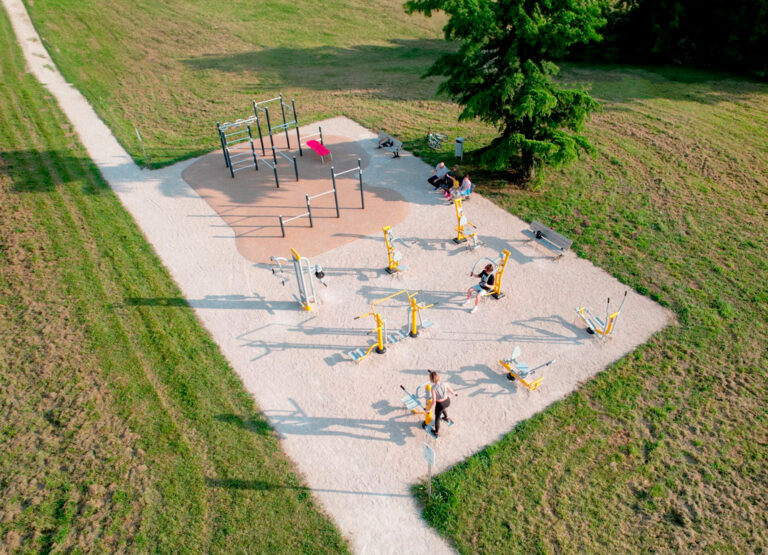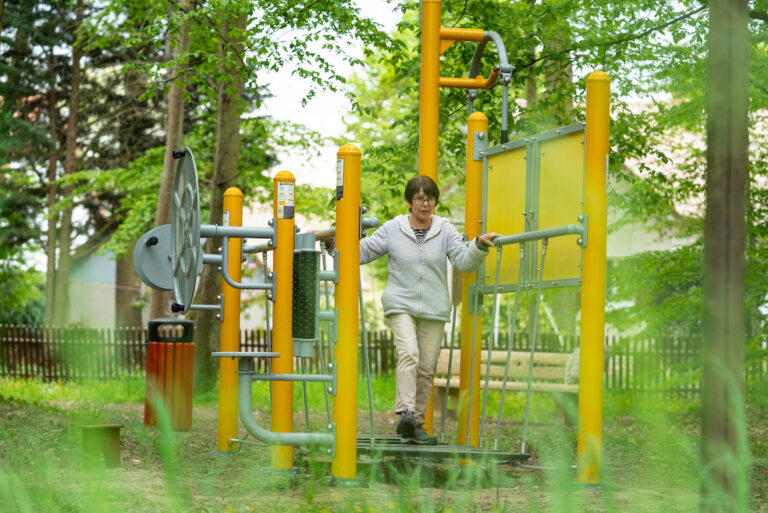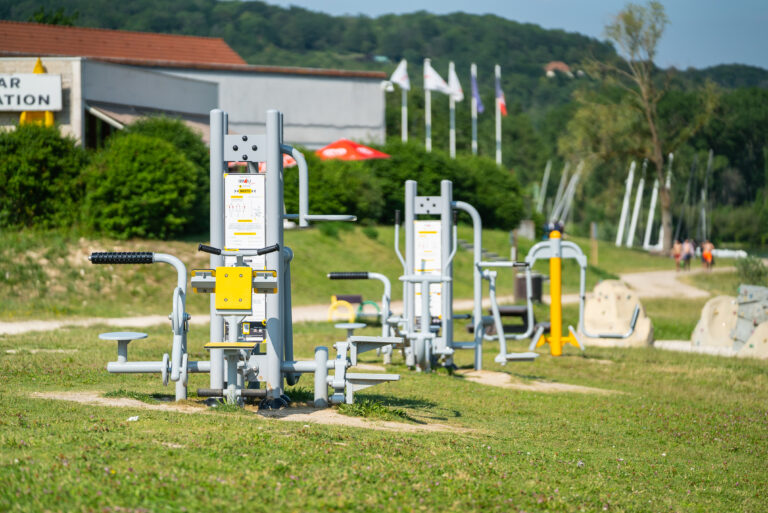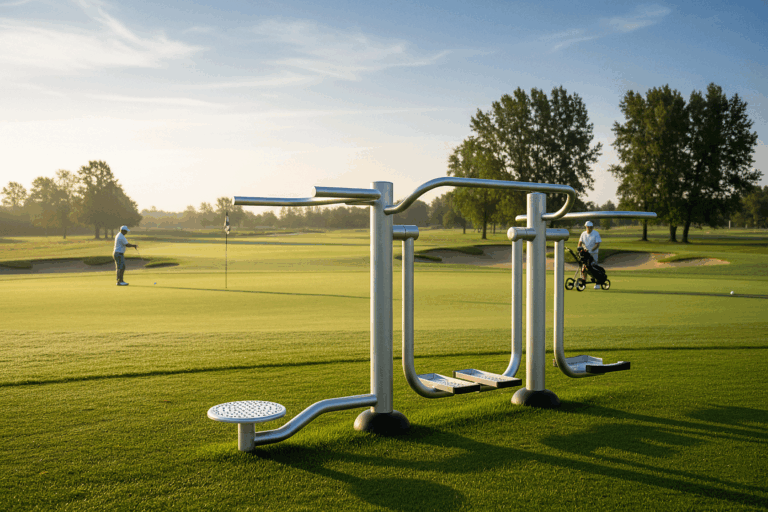Introduction :
Security, trust and compliance at the heart of projects
Outdoor fitness is making a lasting impact in public spaces, campuses, healthcare facilities and residential areas. For building owners (local authorities, schools, nursing homes, landlords), it’s no longer just a question of deploying modern equipment: it’s a question of providing safe, durable and compliant facilities. This is where the inspection of outdoor fitness areas by an independent inspection body comes in. This approach formalizes risk prevention, certifies compliance with current standards and strengthens the confidence of users and decision-makers alike.
In this article, we explain in clear and practical terms why and how outdoor fitness areas are inspected, what standards apply (EN 16630 in particular), what an inspection body checks, and how Herkules Fitness integrates these requirements right from the design stage to deliver safe, high-performance areas.
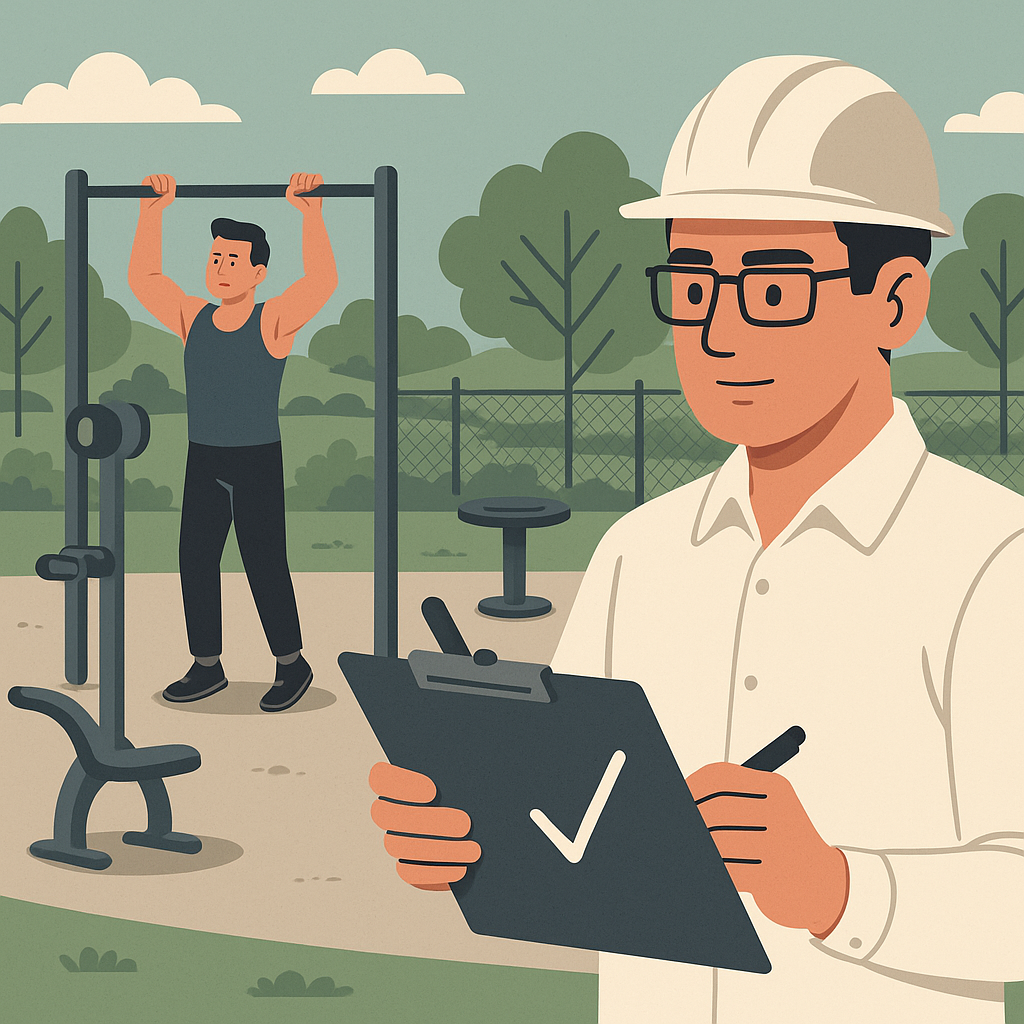
1) Why inspect an outdoor fitness area?
1.1. Preventing risks for users
A fitness area brings together users of all ages, sizes and abilities. Repeated mechanical stress, climatic exposure and intensive use demand robust equipment and impeccable layout. The inspection of outdoor fitness areas helps to identify non-conformities (excessive play, crushing/pinching points, undersized fixings, anchoring defects, unsuitable coverings, etc.) that could lead to injuries or falls.
1.2. Ensuring the sustainability and availability of public services
Equipment that breaks, rusts or loosens too quickly generates maintenance costs, downtime and complaints. By checking the quality of materials, corrosion resistance, thesuitability of seals and weather resistance, an inspection office can secure your investment over the long term and avoid preventive shutdowns.
1.3. Reassuring stakeholders and strengthening acceptability
For town halls, campuses and health centers, demonstrating a controlled approach to outdoor fitness areas is another way to build aserious image. The result: greater appropriation by users, reduced legal risks and calmer communication with insurance companies and technical departments.
2) Standards framework: EN 16630 and distinction from play areas
2.1. EN 16630: the reference standard for open-access fitness equipment
Standard EN 16630 (NF EN 16630 in France) defines the safety requirements and test methods applicable to fixed open-air fitness training modules. In particular, it covers functional dimensions, ergonomics, stability, materials, mechanical strength, movement zones, risk of entrapment, signage andinspection/maintenance requirements. Any serious approach to the inspection of outdoor fitness areas refers to it to document compliance.
Please note: EN 16630 applies to fitness equipment for teenagers and adults with free access, as opposed to play equipment for children.
2.2. EN 1176: the standard for playgrounds (not to be confused with)
Children’s play areas are covered by standards EN 1176 (and EN 1177 for shock-absorbing floors). Although these standards are similar in spirit (risk prevention, testing, inspection), they do not target the same use or the same user sizes. The inspection office is therefore careful not to transpose inappropriate criteria: a street workout or outdoor fitness station for adults cannot be inspected in the same way as a slide for children. Clearly defining this normative distinction avoids misinterpretation and unnecessary additional costs.
2.3. Beyond standards: rules of the art, manufacturers’ instructions and D.O.E.
The control of outdoor fitness areas does not stop at the text of the standard. Good practice includes taking into account assembly instructions, manufacturer’s recommendations, working drawings, test reports and the Dossier des Ouvrages Exécutés (D.O.E.). This corpus forms the basis for traceability, facilitating operation and maintenance.
3) Role and tasks of a control office for an outdoor fitness area
3.1. An independent third party at the service of risk prevention
An inspection office is a trusted third party who assists the project owner during the design and construction phases. Its mission: to prevent technical risks, check compliance with applicable standards (EN 16630 in particular) and good engineering practice, then issue an opinion or structured report.
3.2. What the inspection office actually checks
- Equipment conformity: materials, finishes, absence of sharp edges, areas of movement, sticking points, tolerances and clearances.
- Layout and civil engineering: center-to-center distances, safety distances, depth of foundations, dimensioning of base plates, strength of anchors.
- Accessibility and ergonomics: access routes, adapted heights and amplitudes, identification of workstations.
- Signage and user information: usage signs, age/height restrictions, safety instructions, maintenance.
- Documentary inspection: certificates, test reports, drawings, D.O.E., maintenance sheets.
3.3. Expected deliverables
At the end of its work, the inspection office provides a report detailing findings, non-conformities, corrective measures and compliance notices. This report is an asset for work acceptance, commissioning and risk management (insurers, internal audits, quality control).
4) Key stages in the inspection of outdoor fitness areas
4.1. Pre-installation (design and preparation)
- Design review: suitability of program (target audience, uses), choice of EN 16630-compliant equipment, materials (galvanized steel, 316L stainless steel depending on environment), finishes.
- Site analysis: layout, pathways, sensitive neighbors, visibility, coactivity with play areas or sports fields.
- Validation of interfaces: foundations and plates, buried networks, water drainage, coatings and altimetry.
4.2. During installation (site supervision)
- Check compliance with assembly instructions and tightening torque.
- Checking anchorages (depth, volume of concrete, verticality, flatness).
- Compliance with centre-to-centre distances and safety distances between fixtures.
4.3. Acceptance and commissioning (post-installation)
- Functional tests: free movement, absence of abnormal friction, shock absorber stroke if present.
- Check signage: clear signs, instructions, age restrictions, any QR codes.
- Compliance report: removal of reservations, creation of D.O.E., maintenance plan.
4.4. Operation and maintenance (periodic inspections)
- Frequent visual checks by the operator (wear, loosening, corrosion, vandalism).
- Annual in-depth inspections by a specialist.
- Traceability of interventions: maintenance sheets, operating log, spare parts.
5) The concrete benefits of Outdoor fitness areas controlled
5.1. Legal certainty and risk reduction
The use of a control office protects the client throughout the entire chain:
- Demonstrable compliance (report, notice, traceability) in the event of an audit, claim or dispute.
- Incident prevention: fewer accidents, fewer emergency closures, fewer complaints.
- Control of responsibilities: clear division of responsibilities between manufacturer, installer and operator.
5.2. Optimization of total cost of ownership (TCO)
Outdoor fitness areas that comply from the outset limit rework and extend service life:
- Reduce hidden costs (after-sales service, civil engineering rework, fixed assets).
- Longer service life thanks to appropriate materials (e.g. 316L stainless steel for aggressive environments) and maintenance plan.
- Greater availability for users (fewer service stops).
5.3. User satisfaction and ownership
- Ergonomic workstations with clear signage.
- Increased trust (families, students, seniors); perception of seriousness and quality.
- Attractiveness of public spaces and the campus: increased use and positive spin-offs.
5.4. Accessibility and inclusion
- Clear access routes, adapted heights and amplitudes.
- Compatibility with Sport Santé Sénior / PMR uses when included in the program.
- Identify areas and prioritize jobs for a variety of audiences (beginners/experienced).
5.5. Enhancing CSR and the region’s image
- Documented safety procedures (reports, registers).
- Transparent communication: “Our outdoor fitness areas are monitored and maintained “.
- Contributing to local quality of life and public health.
6) The Herkules Fitness case: method, commitments and examples
At Herkules Fitness, we put control at the heart of the process to deliver outdoor fitness areas that are safe, durable and easy to operate.
6.1. Conformity-by-design
- Selection of EN 16630-compliant equipment adapted to the target audience (teenagers/adults).
- Sizing of interfaces (plates, anchors, center-to-center distances) thought out with the inspection office.
- Anticipation of signage (instructions, age restrictions, QR codes for use and maintenance).
6.2. Context-sensitive materials and finishes
- Galvanized steel: versatile and robust.
- 316L stainless steel For demanding environments (seaside, corrosive atmospheres, sensitive hospital sites).
- Surface treatments and finishes to maximize longevity and minimize maintenance.
6.3. Typical procedure with control office
- Pre-construction: review of plans, verification of notices and choice of materials, layout analysis.
- During installation: check sealing/anchoring, tightening torques, safety distances.
- Acceptance: functional tests, signage verification, compliance report and removal of reservations.
- Operation: maintenance plan, periodic inspections, record keeping.
6.4. Site types
- Communities: parks, riverbanks, residential areas.
- Education: university campuses, high schools.
- Health & medico-social: hospitals, adapted nursing homes.
- Tourism & leisure: campsites, hotels, watersports centers.
A common goal: controlled, high-performance outdoor fitness areas that last, whatever the site.
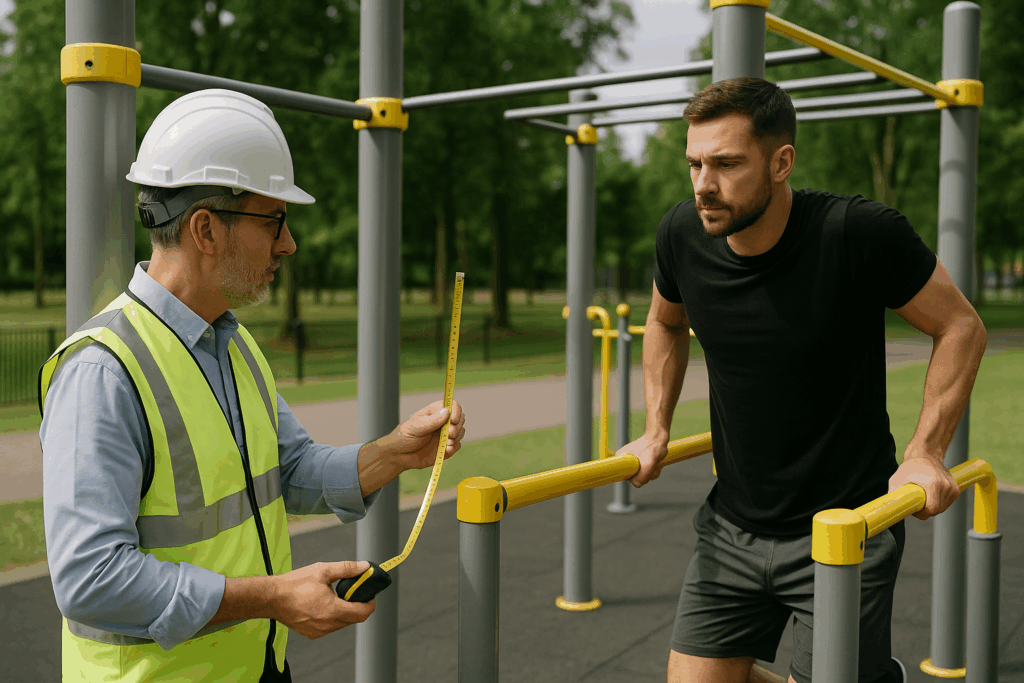
7) Best practices + acceptance/operation checklist
7.1. Good upstream practices
- Define the target audience (teenagers, adults, seniors) and uses (fitness, street workout, health sports).
- Choose EN 16630-compliant equipment, with assembly and maintenance instructions.
- Validate thelayout (paths, spacing, co-activity with playground/multi-sport field).
7.2. Acceptance checklist (operational extract)
- Civil engineering: depth/volume of foundations, flatness, verticality of columns.
- Fasteners: tightening torques checked and recorded.
- Distances: center-to-center distances and movement zones comply.
- Equipment: absence of sharp edges/pinch points, free movement without abnormal friction.
- Signage: age/size restrictions, instructions for use, maintenance contacts, QR code if provided.
- Documents: inspection report, D.O.E., maintenance sheets, warranty.
7.3. Operating checklist (extract)
- Weekly visual inspection for looseness, corrosion, vandalism, abnormal wear.
- Monthly functionality: moving parts race, play, stability.
- Annual in-depth (by specialist): structural integrity, seals, overall compliance.
- Traceability: up-to-date register, replaced parts, dated interventions.
Conclusion – safe, durable and attractive outdoor fitness areas
Calling in an inspection agency for your outdoor fitness areas is more than just a “plus”: it’s a strategic lever for securing your investment, protecting users and enhancing the value of your territory. By integrating the requirements of EN 16630 requirements right from the design stage, and then structuring acceptance and maintenance, you’ll get reliable, popular spaces.
Herkules Fitness supports you from start to finish, from equipment selection and file preparation to inspection coordination, acceptance and maintenance planning.

